On the 2nd August, AgriFoRwArdS CDT students, Rachel Trimble, Grey Churchill, Garry Clawson, Xumin Gao and James Bennett had the pleasure of visiting Stocks Farm and Lower Hope Estates (Berry Gardens), both sitiuated on the Herefordshire-Worcestershire border.
This was a wonderful chance for AgriFoRwArdS students to explore a working farm, packhouse and distribution facility, and hear first hand views from those who know the sector inside and out. The day had been structured in two halves, with Stocks Farm forming the morning visit then Lower Hope Estates forming the afternoon visit.
Stocks Farm with Ali Capper
Stocks Farm is a 200 year old Hop and Fruit farm and has been farmed by the Capper family since 1962. Stocks Farm grows award winning British Hops and Apples in an area of outstanding natural beauty. The farm comprises of 100 acres of hops and 100 acres of apples.
Ali Capper, owner of Stocks Farm, extended the invite to CDT students’ during the May AgriFoRwArdS seminar series to provide them with the opportunity to see the day to day and technical challenges faced in the sector.
Having the opportunity to walk the farm with Ali is a real privilege as Ali has a wealth of knowledge across the whole sector. Ali holds leading positions such as the Chair of the NFU Horticulture and Potatoes board since 2016, Director of British Hop Association, NFU’s National Horticulture & Potatoes Board, Chairman of English Apples & Pears, Director of Wye Fruit Limited, Chairman of Wye Hops, Non-executive Director of NFU Mutual and Director of Oxford Farming Conference.
Ali is also a central figure on the AgriFoRwArdS CDT advisory board. There is possibly no better person to talk with about the challenges faced by British farmers and the need for the right technological solutions to support them.
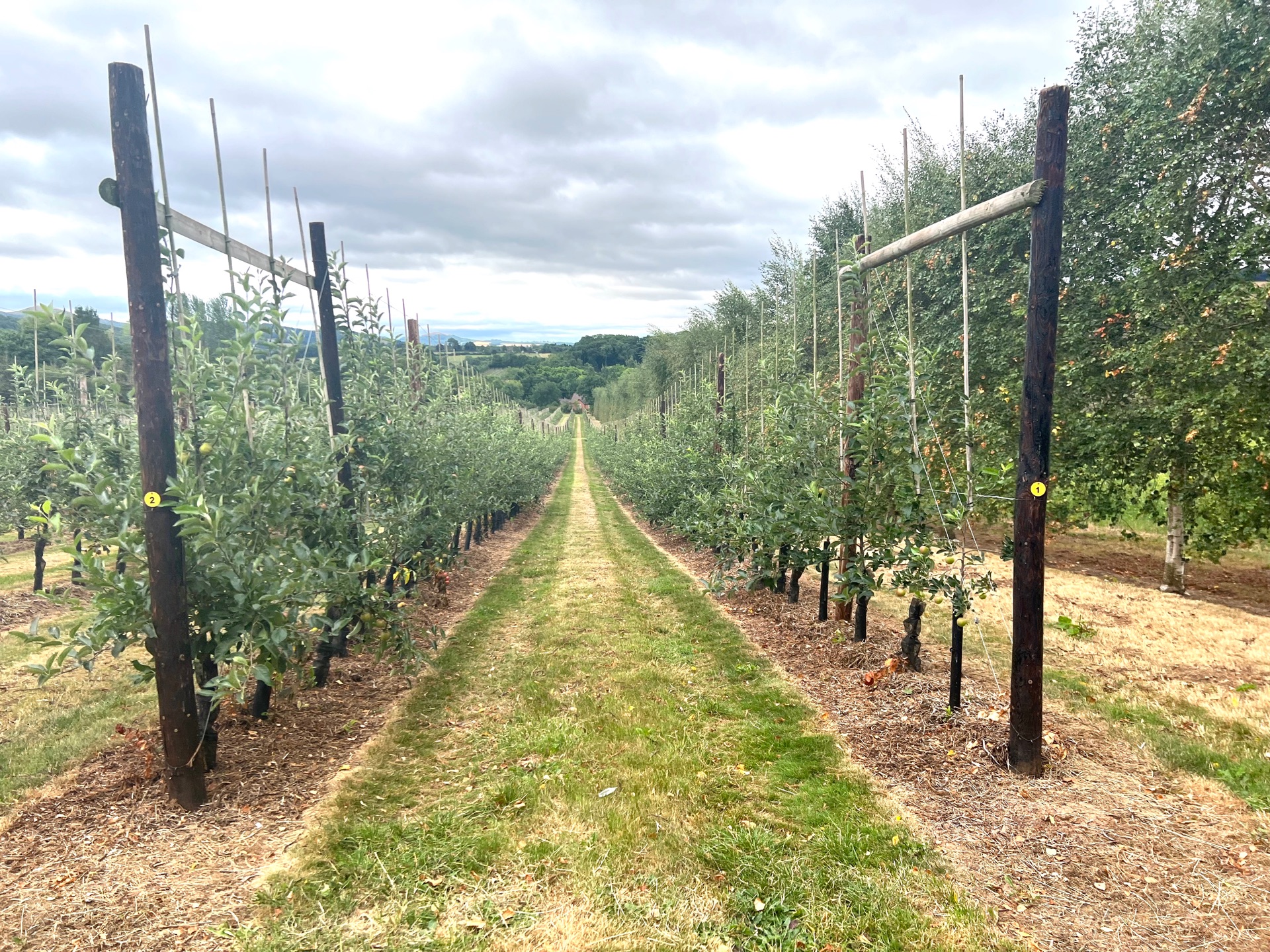
The students arrived at Stocks Farm around 09:45 ready for a 10:00 AM introduction and farm tour. It was an early start to the morning with Rachel, Grey, Garry and Xumin setting off from Lincoln at 06:45 and James (who is from Herefordshire) meeting us at the farm.
Upon arrival it was immediately apparent that this was hops county. Across the rolling Malvern Hills you could see several oast houses, with their extravagant kiln roofs, including those on Stocks Farm itself. Although more modern techniques are now employed to dry the hops, it was wonderful to see them interspersed across the landscape.
Upon arrival, we were first met by Felicity Beaumont who works at Stocks Farm and whose family also farms in the area. Felicity provided a great general introduction the farm house and its history as well as welcoming us to the farm itself. A few moments later Ali Capper joined us and we each introduced ourselves and our research areas. Ali was extremely interested in what were were focusing on and how the tour could be guided to support these interests. Ali was also very keen to hear our thoughts on applications of robotics within the farming sector.
The first stage of the tour Ali introduced us to the farm house which has stood for over 200 years. The family moved into the home in 1962 and have been present ever since, farming apples and hops. The house was truly beautiful with the hop kilns and views across the orchards and hills. Several sections had been built up overtime including a grand Georgian frontage. Understanding the history of the farmhouse itself was important to gain some idea of the traditions important in the family farming business, especially since over 90% of food production is farmed by family farm co-operatives.
After the introduction we then moved into the first orchard which was first planted over 60 years ago. A few of the original apple trees still stood as homage to the first planting, and new modern orchards had been positioned.

Each orchard grows a different verity of apple with Stocks Farm experimenting across several ranges as well as hosting a central variety. Eating apples such as Gala, Juanmi, and Red Windsor could be seen. Additionally, the farm is exploring the Sunburst variety, which has a bright orange tinted skin and a bright pink fleshy centre – these are loved by everyone but especially children!
The direction of the rows is specifically designed with everything from the weather elements including rain, wind and low lying frost considered. Additionally, across several of the orchards, the isles had a wild flower cover crop to support biodiversity. This was further supported by several bee hives managed and placed strategically around the farm. Depending on the orchard, some covers crops had to be alternated across rows to ensure they were not stealing nutrients, or warming the soil, for the main crop (this was mainly in the hop fields).
As we walked through the estate Ali spoke about the challenges that are faced each day where remote sensing or robotics may be able to help. This ranged from the thinning of the apple crops (required to ensure that apples do not grow under or oversized or become damaged from touching one another), to assessment requirements around yield and size estimations. Throughout the orchards we had the chance to ask questions and stop Ali to enquire more on the current practices and what technology improvements would provide the most impact.

Once we had walked through the Apple orchards, we progressed onto the Hops orchards. Stocks Farm grow several varieties of Hops, ranging from Pilgrim, Target to Goldings. They come into ‘burr’ around this time of year
If you have never seen a Hops orchard before they are pretty mesmerising. The growing system used is formed by the process of ‘stringing’, this is where the the string is attached to a hook on the ground and then to the top of the framework. At Stock Farm miles of stringing is required to develop the framework for the Hops to grow. As the Hops sprout (they are perennial crops), the shoots are manually wound up the string to provide a starting point. As Hops grow clockwise they need to be strung correctly! The gaps between each hop row is critical to allow suitable light levels in but also reduce the wind that can cause browning. This can be mitigated by planting barrier trees across the edges of the fields (Silver birch were being planted across the Stocks Farm). Hops can be inspected by looking for fingers or shoots across the top of the rows to see the health of the crop.

Hops and Apples require continuous inspection for diseases and insects (such as spider mites and moths). Stocks Farm manage this very carefully by regular inspection and opportunities for automation were discussed. This area requires very skilled assessment so local knowledge is just as important as theory.
Ali’s farm is huge! So it took around 2 hours to fully walk the orchards while answering and asking questions. One of the final stops was to speak and watch the farm workers thinning the orchards. They had already completed one section that we had gone to see and so we followed them into another zone. The lead picker was a chap called Sam who was extremely experienced in this work. Sam co-ordinated a small team to ensure they were thinning throughly enough but not too strongly as to remove potential good crops.

Once we had a chance to see how the pickers worked, we headed back to the main farm house and into the main shed to see some of the equipment used to harvest. Most of this equipment was high cost but only in use during harvest time, meaning a large portion of downtime if a system cannot be used elsewhere. This time also gave us another opportunity to ask questions and challenge Ali on current practices. It was a fantastic visit to Stocks farm with an engaging and knowledgeable host. By this time it was 12:30, the sun had been beating down all day and lunch was calling!
Lunch at The Glasshouse
We had around 1 hour between Stocks Farm and Lower Hope Estate. They are around 30 minutes from each other so we decided to take a lunch break at a recommend cafe called the Glass House. This was a beautiful garden centre with restaurant, gardens, furniture, but really bad phone signal (but really great wifi!). Here, we sat down, discussed what we had seen and enjoyed a wonderful lunch before heading off to Lower Hope.

Lower Hope Estates with Simon Wells
The group arrived at Lower Hope Estates dead on time for 14:00. We were met by Simon Wells, the Managing Director at Lower Hope Fruit Ltd. Lower Hope Estates are a huge commercial farm that produce a variety of soft fruits but focus mainly on british cherries. They sit around 700ft above sea level so get full exposure to sunlight as well as drainage to make sure they produce the plumpest cherries.
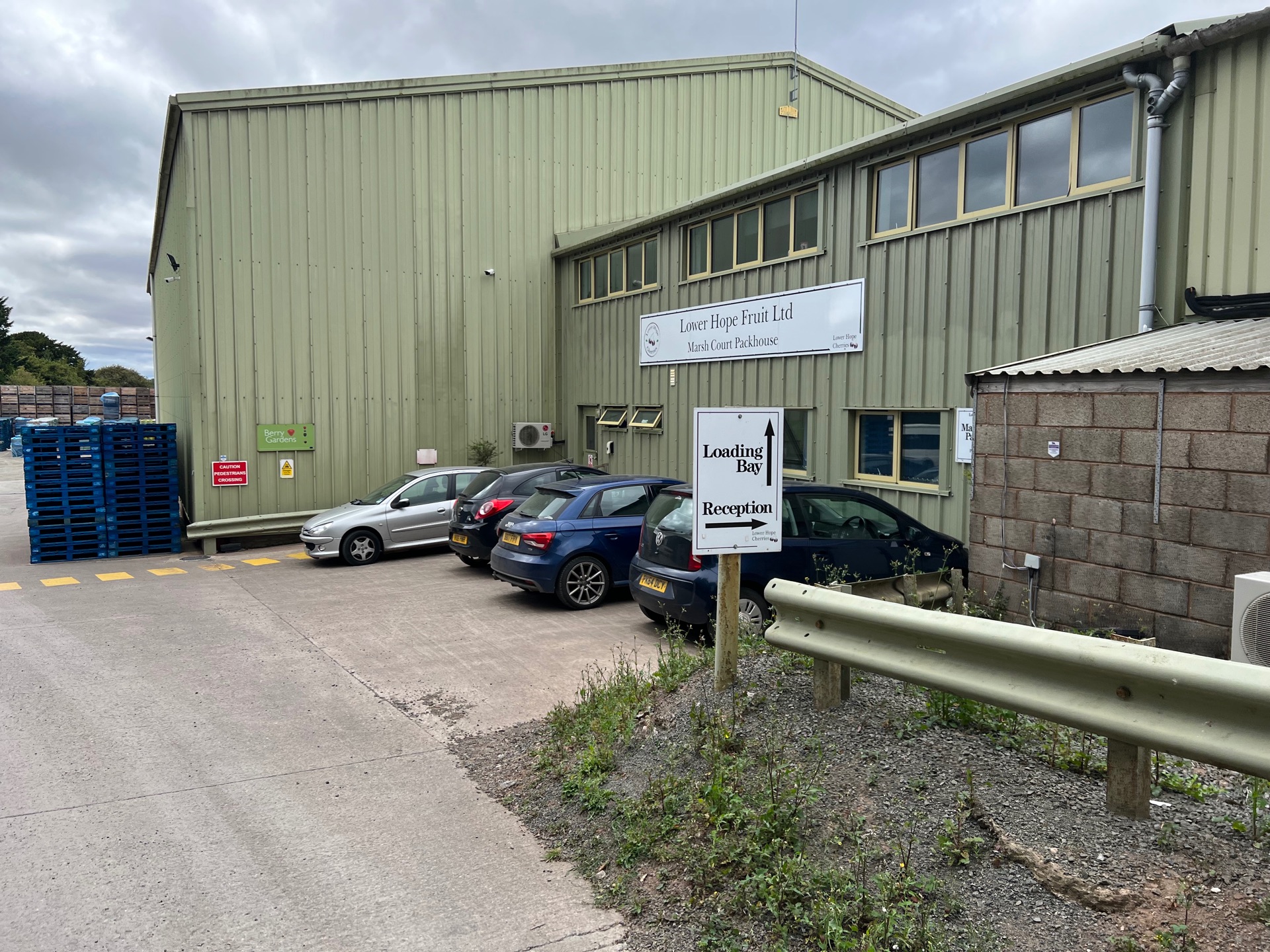
At the start of the visit we were asked to complete all relevant H&S forms. As we were travelling into a food production facility, we were each required to wear hair nets, jackets, take off all metal objects and leave our phones (Note: which means there are not any internal photos to share – sorry). This is so that there is no risk of contamination.
Simon introduced us to Sophie Bray, Technical Manager, who would be our guide. Sophie had a wealth of experience across the operations and had worked at each stage of the process. The first part of the tour was into the cold stores, these kept the cherries that had been picked in the day at a cool temperature. In standard atmospheric (but chilled) conditions cherries could be kept around seven days, if the atmosphere is controlled (such as you would when transporting cherries to other countries), then they could last anywhere from four to eight weeks.

Once the cherries were required they were taken from the cold store, inspected and sorted. The inspection and sorting process was achieved using a specialised 20 meter long machine with cherries being placed at one end ready for infra-red scanning. As many as 30 images can be taken of each single cherry to ensure that not only are there no skin defects, but also that areas of the cherry such as its shoulder, body and base are not too soft and that the centre of the cherry is also good. This means that degradation at the retailers is minimised and customers get a long lasting product.
Once we had viewed the inspection and sorting process, the cherries then again go to a interim cold store. This acts as a buffer between the final packing section of the process. As the cherries will go to many customers, such as Tesco, Co-Op, Acado (M&S) and Waitrose, as well as to wholesalers (for the local fruit and veg market stand), they need to be packed in their right packaging. Customers can order in any size punnet (such was 300g or 500g) as well as have their own requirements on pricing and labelling. This is all managed by the final packaging team. Weights are managed by measuring each punnet as it is being filled to ensure that average weight is achieved to specification.
British cherries have an exacting requirement that they each have their stems on. This means that the picking process has to be performed exactly the same each time. To ensure no damage to the cherry itself this can take a high level of practice. During inspection , if the stem has even a small amount of leaf on it then it can fail specification and be rejected. Luckily, we saw what was perfect produce going through the process – the picking team had done a great job!
Once we had visited the pack house we were invited to see the actual cherry crops. These were around a two minute drive away from the main premises. At Lower Hope Estates, as well as Stocks Farm, they rely heavily on seasonal workers and as such accommodation, facilities, entertainment is provided to cater to their needs while on site.
Once at the cherry trees, we were introduced to Emma Smith, Crop Walker and Growing Technician and an expert in disease management. Emma’s role was to ensure that the crops not only produced the best yield, but also to make sure they thrived, no matter what the conditions. This is by no means easy and requires constant monitoring and assessment. Emma discussed with us how insects can play a role and what courses of action can be taken depending upon a variety of situations. This can vary from tree to tree or across the farm in general.
The cherrie trees were completely different to the apple trees. There was much more occlusion (where leaves get in the way of the cherry itself), the bunches of cherries were more densely packed, access was more of a challenge and the trees were kept under cover. This means that irrigation is required and there is a height limit. The apple orchards though have their own separate challenges such as access, height, weight of the apple on each branch causing bending etc. These are difficult technical challenges to tackle.
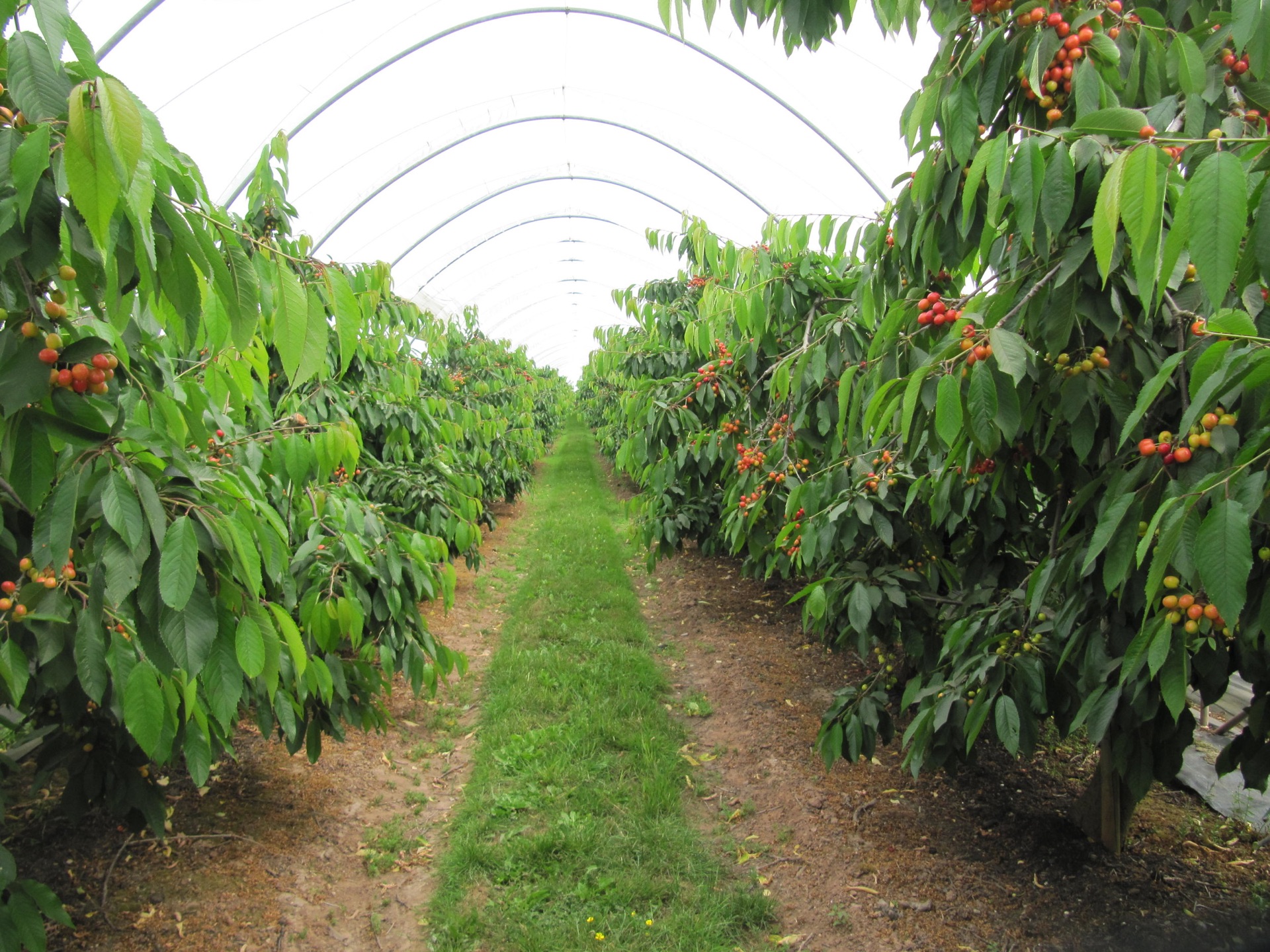
Towards the end of the tour we discussed disease control and how insects are used to balance pests. We also discussed the opportunity for robotics and how tools such as supporting a picker with moving produce to full assessment of the crops could provide benefits. It was clear these challenges and the environment they are in, required greater advancement in state of the art. However, it was also clear that work is also underway and progressing fast. It just so happens that humans are pretty great at doing this work and are hard to beat with their skill and dexterity!
We left the Lower Hope Estate around 16:00 to make our way back to Lincoln. The group was really excited to have had the chance to see these operations in real life and to augment their own experiences.
Cohort 2 student, James Bennett said of the day:
I was really grateful for everyone who showed us around and shared their knowledge with us. They did a great job of explaining how their businesses had developed over the years and the technology that had been adopted. It was encouraging to hear their enthusiasm to continue to seek out technological solutions. I was also reminded how even simple, partially automated systems can be of great benefit to them.
A huge thank you to Ali Capper and Simon Wells for giving their time, expertise, knowledge, and sharing with us the great work that they do and also the concepts and technologies required that would aid in making their processes more efficient and effective.
Do you want to get involved in the CDT?
If you are interested in learning more about what we do and if you share a passion for agriculture and technology then go to our AgriFoRwArdS CDT website to see more about our research, how you can be involved and how to apply to be a student in the program.
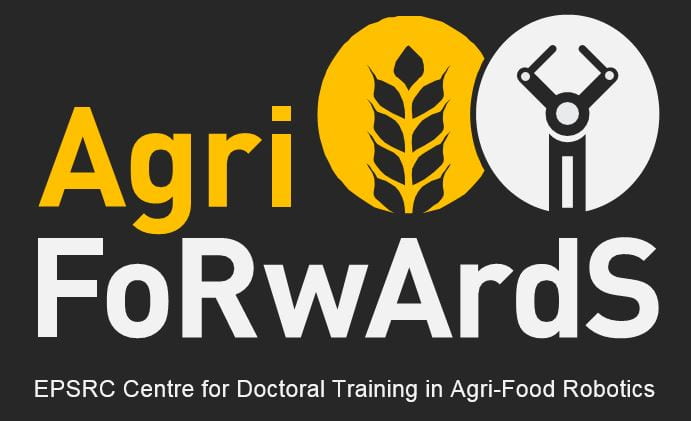
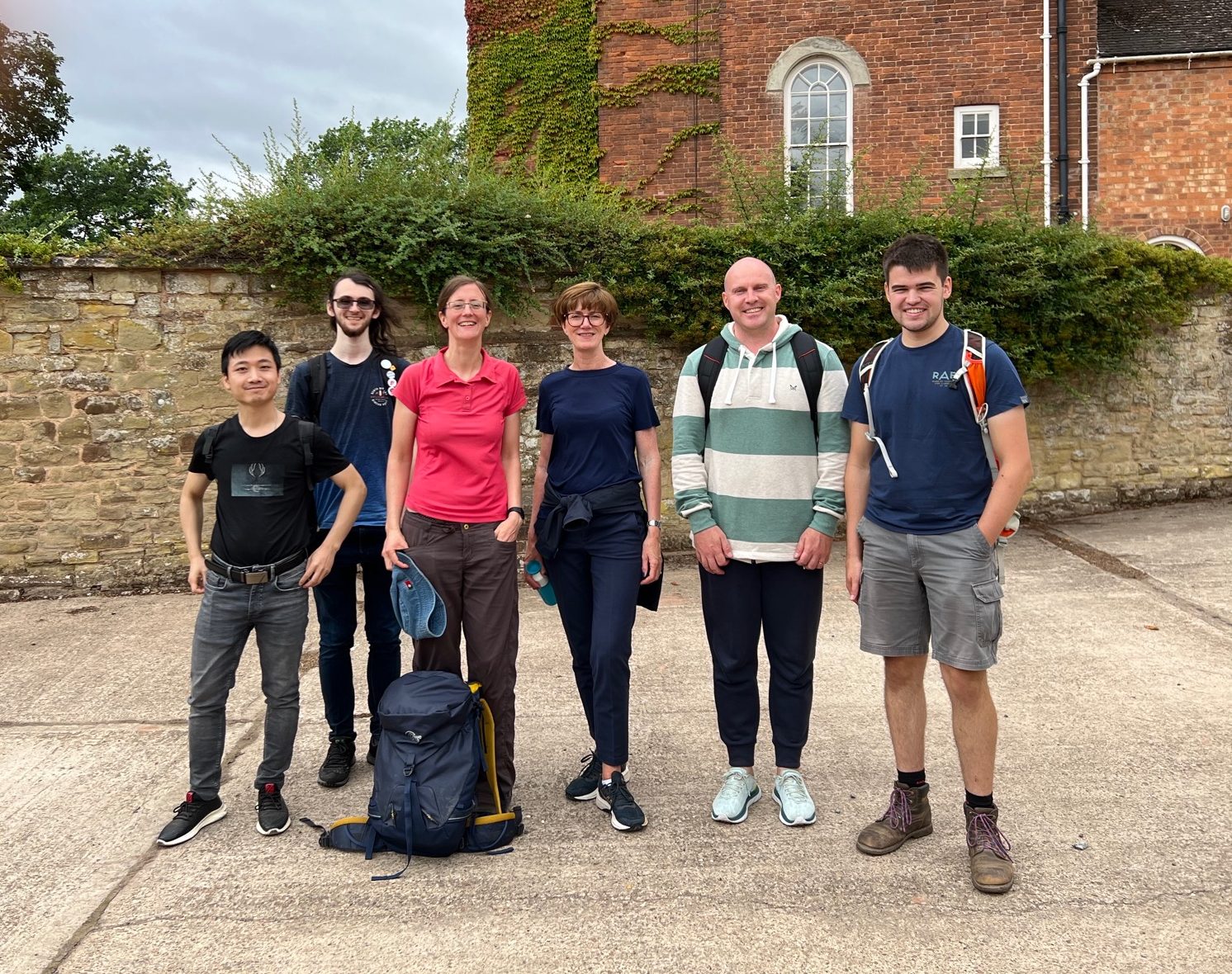
Be First to Comment